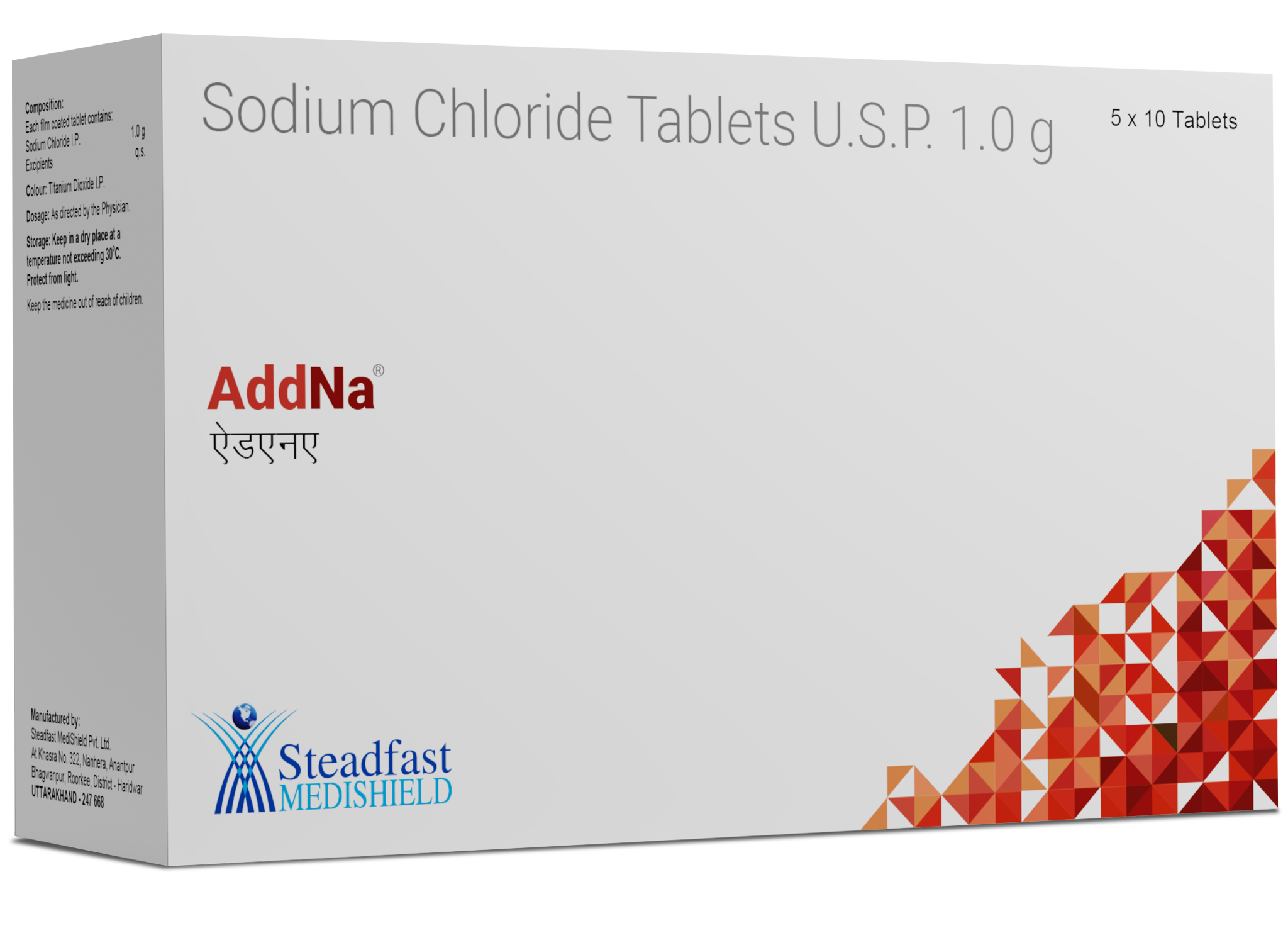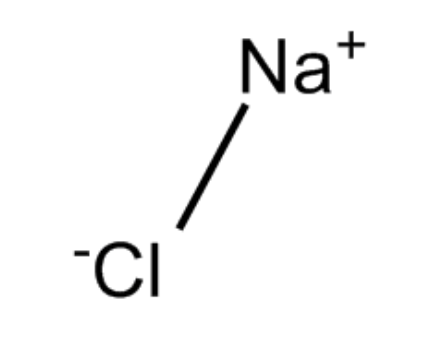
Description:
Sodium Chloride is a halite an ionic compound having chemical formula Nacl, which has 1:1 ratio of sodium and chloride ions, having rock-salt crystal structure. In sodium chloride the molar masses of sodium and chloride is 22.99 g/mol and 35.45 g/mol respectively. Sodium chloride contributes to the salinity of seawater. It is the major component of extracellular fluid of many organisms. It has been enlisted important in model list of essential medicines by World Health Organisation. Sodium chloride is majorly used in the form of dietary salt in regular household and has an important role to play in food preservation.
Composition:
Each film coated tablet contains Sodium Chloride 1 gm.
Chemistry:
The melting point of sodium chloride is 801°C. pH of sodium chloride solution remains 7 because of the weak basicity chloride ions.
Structure:

Pharmacology and Biochemistry:
Sodium is the major cation of the extracellular fluid. The major function involves maintaining the fluid volume balance, distribution of water and osmotic pressure of body fluids. Sodium is closely related with chloride and bicarbonate in the regulation of the acid-base balance of the body fluid. Chloride is the major anion present in extracellular fluid. It accompanies the metabolism of sodium and the acid-base changes that happen because of changes in chlorine concentration.
Metabolism:
Sodium chloride that reaches gastro intestinal tract remains unabsorbed for most of the parts. The liquid content passes through small intestine and bowel. On reaching the colon, the salt is taken into the blood along with the water. There is always a balance that is maintained as the excess absorbed is always being excreted by kidney. This helps the body maintain an equilibrium of dissociated ions by retaining 300 grams of salt dissolved in fluid and blood.
Absorption, distribution and excretion:
Sodium absorption has a role to play in the absorption of chloride, amino-acids, glucose and water. Chloride in the form HCL (hydrochloric acid) is an important of digestive gastric juices. Sodium in absorbed rapidly in gastro-intestinal tract. Through the sodium-potassium-adenosine-triphosphate pump the absorption occurs at the intestinal walls.
The volume of distribution is 0.64L/kg
Sodium doesn’t bind to plasma protein
The kidney eliminates sodium through the glomerulus, but the reabsorption percentage is 60% to 70% the proximal tubules accompanied by bicarbonate and water. Additional 25% to 30% is reabsorbed in the loop of Henle accompanied by chloride and water. In the distal tubules, aldosterone facilitates the reabsorption of sodium and chloride. The renal threshold for sodium is 110 to 130 mEq/L. Less than 1% of the filtered sodium is excreted in the urine.
Mechanism of action:
Sodium and chloride both the major components of extracellular fluid, present in the fluid compartment present outside the cells; work in synergy with each other to control the volume and pressure. Any disturbance in sodium concentrations leads to disorders of water balance. In hyponatremia sodium chloride replenishes the deficit of sodium thereby bringing the serum sodium levels back to normal.
Half-life:
17 minutes.
Indication:
It is indicated in hyponatremia caused because of kidney, liver and heart conditions. It is indicated in SIADH (Syndrome of inappropriate antidiuretic hormone). Any patient who presents with neurologic compromise or seizures as a result of hyponatremia requires urgent correction of serum sodium level, regardless of the rate of fall in sodium. Hyponatremia associated with surgeries, and in intensive care units.
Dosage:
Usual dosage for Nacl tablets are 6-9 gm, daily in divided doses (e.g., 2-3 gm two or three times per day) calculated according to the below mentioned formula:
Amount of Na needed to raise the Na : (Targeted concentration of Na – Current Na concentration) x (0.6 x weight in kg)
Contraindications:
It is patients with hypernatremia. Hypersensitivity to sodium chloride or any component of the formulation.
Adverse Reactions:
Frequency not defined:
Cardiovascular: Hypotension, localized phlebitis, peripheral edema, venous thrombosis
Central nervous system: Chills
Dermatologic: Pruritus, skin rash, urticaria
Endocrine & metabolic: Acid-base imbalance, electrolyte disturbance (dilution of electrolytes), hyperchloremia, hyperchloremic metabolic acidosis, hypernatremia, hypervolemia, hyponatremia
Neuromuscular & skeletal: Tremor
Respiratory: Pulmonary edema
Miscellaneous: Fever
Usage in special population:
Pediatrics: Sodium chloride is not known to cause any unwanted side-effects. In case children become short of breath, and their face becomes puffy, doctor should be contacted. Sodium chloride should be refrained until advised.
Pregnancy: Animal reproduction studies have not been conducted. Sodium requirements do not change during pregnancy.
Drug interactions:
Lithium: Sodium Chloride may increase the excretion of Lithium.
Tolvaptan: Sodium Chloride may enhance the adverse/toxic effect of Tolvaptan.
Presentation:
10 tablets packed in a strip, 5 such strips packed in a carton
